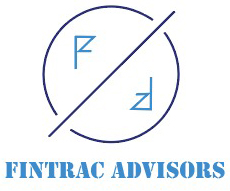Key Drivers in Raising Funds for Startups

Rohit Gupta
Rohit Gupta is a seasoned Chartered Accountant with over 13 years of experience spanning corporate, Big 4, and startup ecosystems. He is the founder of Aashvasan Advisors, an investment banking firm specializing in fundraising, cross-border business structuring, and virtual CFO (vCFO) services. Through his deep financial expertise and strategic insight, Rohit has been instrumental in guiding businesses through complex financial landscapes and scaling their operations both in India and globally.
The journey of a startup from an idea to a scalable business often hinges on one crucial element—funding. Raising capital is not merely about acquiring money; it’s about securing the resources that will catalyze innovation, enable market penetration, and sustain operations until profitability. For startups, especially in their early stages, identifying and leveraging key drivers that influence fundraising success is essential. This article explores the major factors that drive successful fundraising efforts for startups.
Strong Value Proposition
At the heart of any funding pitch is the value proposition. Investors are looking for solutions that address real market needs. A startup must clearly articulate the problem it solves, how it solves it differently or more effectively than existing alternatives, and what tangible benefits the solution offers to customers. A strong value proposition helps build credibility and demonstrates the startup’s potential for disruptive growth.
Scalability and Market Opportunity
Investors typically favor startups that operate in large or growing markets. The ability to scale rapidly and efficiently is a key driver in fundraising. Startups that demonstrate a clear strategy to expand their product or service across markets, geographies, or customer segments tend to attract more attention. A detailed analysis of the Total Addressable Market (TAM), Serviceable Available Market (SAM), and Serviceable Obtainable Market (SOM) strengthens the business case.
Traction and Performance Metrics
Early signs of traction, such as user growth, customer acquisition, retention rates, and revenue, are strong indicators of a startup’s viability. Investors seek proof that the business model works and that there is genuine demand. Metrics like Monthly Recurring Revenue (MRR), Customer Lifetime Value (CLTV), and Customer Acquisition Cost (CAC) play a significant role in showcasing the health and potential of the business.
Experienced and Committed Founding Team
The strength and commitment of the founding team are often deal-makers for early-stage investors. A passionate, capable, and cohesive team with a mix of domain expertise, business acumen, and execution skills provides confidence to investors. Demonstrating past entrepreneurial experience, adaptability, and a clear vision significantly influences the funding decision.
Clear Business Model and Revenue Strategy
Startups must have a well-defined business model that outlines how the company plans to make money and sustain profitability. Whether it’s a subscription-based model, freemium strategy, B2B service offering, or marketplace setup, clarity on revenue streams is vital. Investors are interested in how quickly the startup can monetize and what the path to profitability looks like.
Investor-Startup Fit and Networking
Not all investors are the same. Some focus on specific industries, stages, or geographies. A key driver of successful fundraising is targeting the right investors whose goals align with the startup’s vision. Strong networking, mentorship connections, and participation in incubators, accelerators, and startup events help build these relationships. Personal referrals and warm introductions often improve chances significantly compared to cold outreach.
Compelling Pitch and Storytelling
Fundraising is not just a financial transaction; it’s also about persuasion and storytelling. A compelling pitch deck that communicates the startup’s mission, market opportunity, solution, and potential impact can leave a lasting impression. Effective storytelling builds emotional engagement and demonstrates clarity, ambition, and purpose. Investors are often influenced by how well a founder tells the story of their business.
Regulatory and Legal Readiness
Investors conduct thorough due diligence before committing capital. A startup that has its legal structure, intellectual property rights, tax compliance, and corporate governance in place is more attractive. Being legally compliant and transparent reduces perceived risks and builds investor trust. Neglecting this aspect can derail potential deals even after initial interest.
Timing and Market Trends
The timing of a startup’s fundraising effort in relation to market trends can play a crucial role. If a startup is operating in a sector that is currently attracting investor interest, such as AI, climate tech, or health tech, it may enjoy a funding tailwind. Being in sync with macroeconomic and industry-specific trends can improve visibility and perceived potential.
Use of Funds and Milestone Planning
Investors want to know how their money will be used. Clear articulation of how the funds will be utilized—whether for product development, talent acquisition, marketing initiatives, or operational scaling—shows strategic thinking. Startups that link funding to specific milestones (e.g., launch of minimum viable product (MVP), expansion into new markets, reaching revenue targets) offer a structured growth roadmap, which increases investor confidence.
Conclusion
Raising funds is one of the most critical and challenging stages in a startup’s lifecycle. It requires a thoughtful blend of strategy, communication, and execution. While the startup ecosystem is more vibrant and investor-friendly today than ever before, competition is intense. Startups that focus on their core drivers—value proposition, traction, team, market fit, and execution—stand a better chance of securing the capital needed to grow and thrive. Ultimately, successful fundraising is about forming a long-term partnership grounded in shared goals and mutual trust.
Disclaimer
The content published on this blog is for informational purposes only. The opinions expressed here are solely those of the respective authors and do not necessarily reflect the views of Fintrac Advisors. No warranty is provided regarding this information’s completeness, reliability, or accuracy. Any action taken based on the information presented in this blog is strictly at your own risk, and we will not be liable for any losses or damages resulting from its use. It is recommended that professional expertise be sought for such matters. External links on our blog may direct users to third-party sites beyond our control. We do not take responsibility for their nature, content, or availability.


